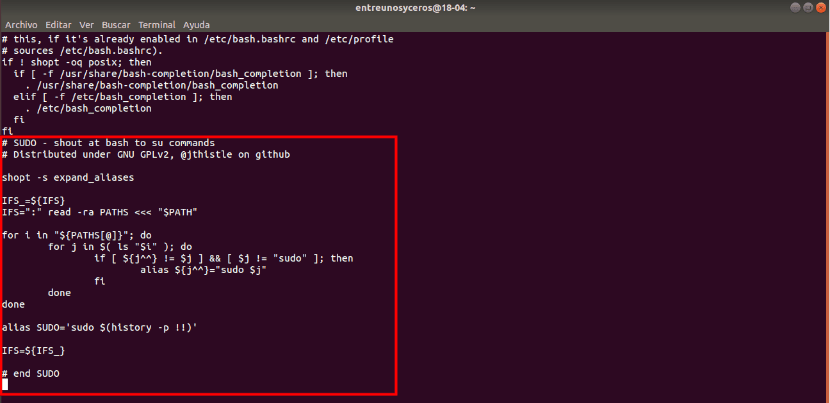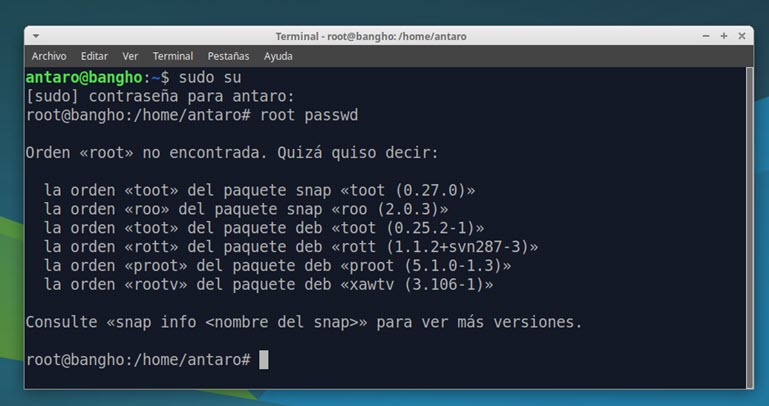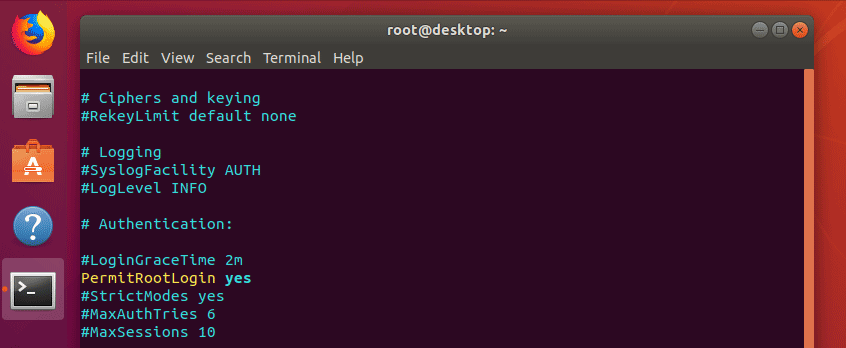

In this article, we set up a new user account and granted sudo access to it by included it in the sudo group.
Ubuntu sudo password#
You may list the items in the /root directory, for instance, which is typically only accessible by the root user: $ sudo ls -la /root password for bob:ĭrwx- 3 root root 4096 Aug 12 18:31. Another typical example is to allow the user to run only specific commands via sudo. Do not forget to change username with the username you want to grant access to. Use the su command to switch to the new user account before testing the new sudo permissions: $ su - bobĬheck that you can use sudo as the new user by adding sudo before the command you wish to run with superuser privileges: $ sudo command Scroll down to the end of the file and add the following line: /etc/sudoers.
Ubuntu sudo full#
On Ubuntu/CentOS, the sudo group’s members all have full sudo access by default. Make sure to change bob once more to the username you just added.
Ubuntu sudo how to#
To add a user to the sudo group, use the usermod command: $ usermod -aG sudo bob The following steps will demonstrate how to set up a new user with sudo access on Ubuntu / CentOS / RedHat (RHEL) without having to change the /etc/sudoers. Is the information correct? y Step 3 : Add user to sudo group Įnter the new value, or press ENTER for the default Giving a user sudo permissions on Ubuntu Desktop is a simple two-step process: Step 1: Open up the Settings application, go to Users and click Unlock. Īdding new user `bob' (1001) with group `bob'. Accepting the defaults is fine, but don’t forget to leave all of this information blank. Replace bob with the username that you want to create. Use the adduser command in order to add a new user to your system: $ adduser bob
Ubuntu sudo install#
That’s good, because you need root privileges to do things like perform updates and install packages (probably wouldn’t be too nice if any user could do that). Step 1 : Access Your ServerĬonnect to root user with SSH: $ ssh _server_ip_address Step 2 : Adding a new user When installing Ubuntu, you’re asked to create a user, and that user gets sudo access by default. The easy solution is to just start a new shell as root, and bash will automatically read /etc/bash. If you want to set up sudo for an existing user, go to Step 3. As Marcos says, your main problem here is that source is a shell builtin command that affects only the shell process in which its run. The following steps will demonstrate how to set up a new user with sudo access on Ubuntu / CentOS / RedHat (RHEL) without having to change the /etc/sudoers file on your server.

The sudo command temporarily elevates privileges, allowing users to complete sensitive tasks without logging in as the root user. The sudo command allows a normal user to run a command or perform activities as another user. That’s it! You should now be able to run any command using sudo.Linux system administration, Security Introduction The percent sign indicates that the following identifier represents the name of a group instead of a user. Search for a line like this: # Full access for members of the sudo group Open the /etc/sudoer file using your favorite editor, like nano: # ensure your user is in the sudo groupĬheck whether the “sudo” group already has all permissions on your system. You also have to add your user to the sudo group. Use the visudo command to edit the configuration file: sudo visudo.

ls -l /etc/sudoers -r-r- 1 root root 481 21:43 /etc/sudoers. You can use ls command to locate this file. The sudo configuration file sudoers is in most cases located in /etc/sudoers. The next step is to give your own user the sudo rights: user od -AG The first command should reveal a location of a sudo binary executable and the second program will output a version number of sudo command its self. You need to run this command as a user that has permissions to install packages, like the root user: apt-get install sudo You can do that using the apt package manager. Otherwise, you will see something like sudo command not found. If you have sudo installed the system, will display a short help message. To check whether the sudo package is installed on your system, open up your console, type sudo, and press Enter. The beauty of sudo is that you can grant root access to certain users without giving them the root password. In normal use, it is setup so that people in the wheel group can run commands as root if they give it their password. Use “which” in Linux to find the Location of an ExetableĪt first, you need to install the sudo command. The sudo package is pre-installed on most Linux distributions. sudo (superuser do) is a great tool for restricting access to the root account (or other accounts). How to Show Your Elasticsearch Version on Ubuntu/Debian Install a Specific Version with apt-get on Ubuntu/Debianįix Ubuntu/Debian apt-get “KEYEXPIRED: The following signatures were invalid”


 0 kommentar(er)
0 kommentar(er)
